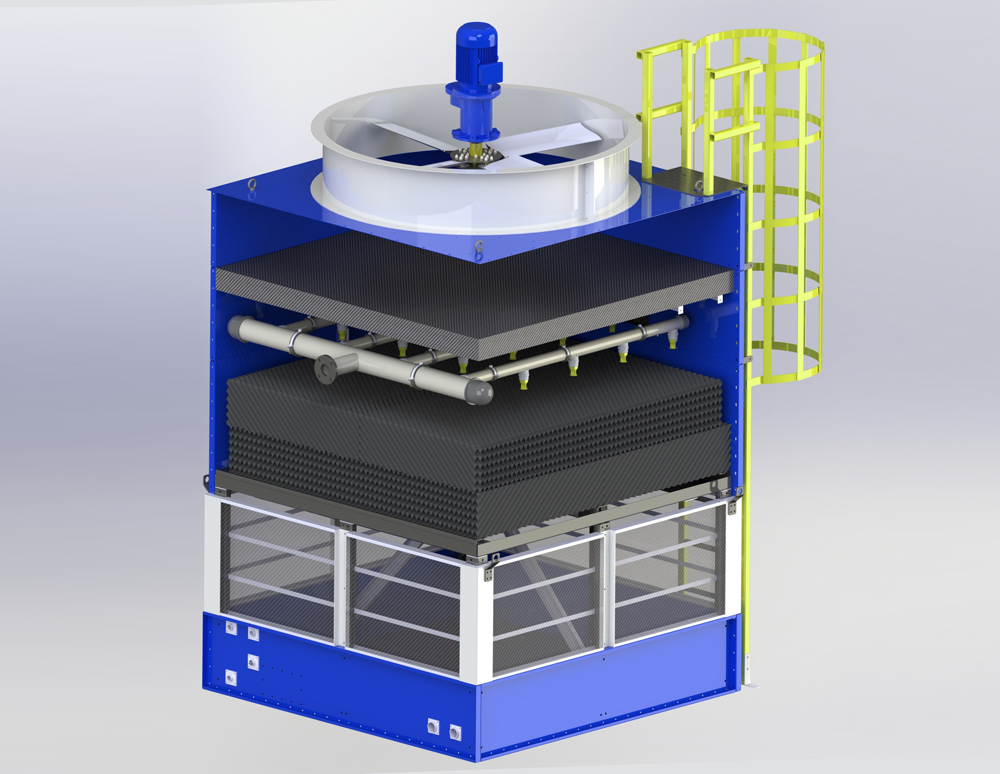Open Circuit Cooling Towers
Introduction
In open circuit cooling towers, there is a direct contact between the water to cool down and the air.It is a heat exchanger that in order to cool down water makes use of the direct contact with the air. The heat transfer occurs partially thanks to a heat exchange between air and water, but mainly thanks to the evaporation of a small quantity of the water that needs to be cooled. This will allow to cool down to a temperature lower than the ambient temperature.
Operation
- The water that needs to be cooled will be directed to the upper part of the cooling tower.
- The nozzles (A) distribute water over the tower packing (B).
- Water will be spread in a thin and even film over the packing thanks to its shape. This will result in a very large contact surface (heat exchange surface).
- The fan blows or extracts (depending on the type of fan) ambient air through the packing. This air will cool the water in 2 different ways. Part of the heat will be removed due to convection (contact between hot water and colder air), but the main cooling part will be because of evaporation.
- The air, which is now saturated with humidity, will be exhausted through the upper part.
- The cooled down water will be gathered in the basin (C) so it can be reused in the production process.
- The drop eliminators above the nozzles make sure that the water drops don’t leave the cooling tower.
Process
Open circuit cooling tower is an enclosed structure that distributes warm water over a labyrinth-like packing, or fill, which provides an expanded air-water interface for heating of the air and evaporation to take place. The water is cooled as it falls through the fill, and is then collected in a cold water basin below. The heated moisture-laden air leaving the fill is discharged into the atmosphere.
It discharge heat from water-cooled systems into the atmosphere. The hot process water is distributed over a fill pack (heat transfer media) to interface with air blown by a fan through the cooling tower. During this evaporative cooling, a small part of the water evaporates while cooling the remaining process water.
Benefits
- optimal cooling, as proved by lab tests
- allowing low process temperatures
- open cooling towers have a small footprint
Configurations
There are two main configurations of factory assembled open cooling towers: crossflow and counterflow. In crossflow cooling towers, the water flows vertically down the wet deck as the air flows horizontally across it. In counterflow cooling towers, the water flows vertically down the wet deck as the air flows vertically up it.
Images
Open Circuit Cooling Towers



